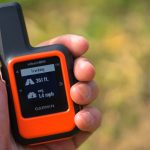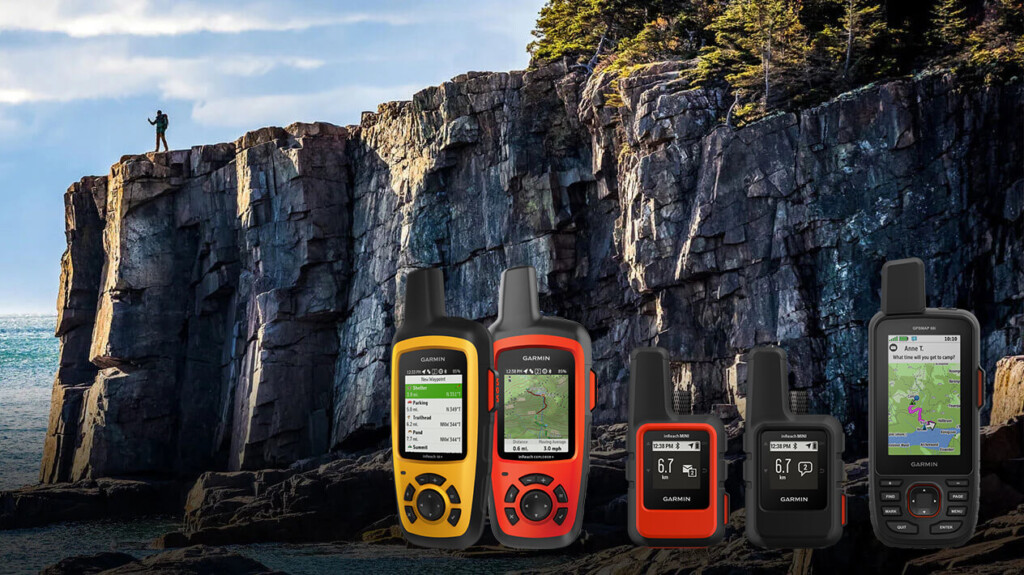
Goodbye Garmin inReach. Welcome au Starlink Direct
At the other day's offline event, I was informed by a participant, and I looked into it the day I got home and signed it the next day... That's what it is.
"au Starlink Direct"
table of contents
Finally, Android users can now use satellite communications on their smartphones, regardless of their communication carrier.
In other words, I am an Android user and a non-au user, and I am finally able to use the communication function for emergency SOS using satellite communication on my smartphone! (Of course there is a fee)
There is nothing more to be more than appreciable for people who often enter deep areas where radio waves are difficult to reach, such as in river climbing or winter mountains,
In the past, they were busy carrying heavy objects like radios in some cases, but a few years ago, "satellite communication devices" like Garmin inReach have finally become affordable for ordinary people, and I have been using this revolutionary device ever since its release.
*To put it simply, Cocoheli is a service that assumes that someone will search for you, so in the sense that you cannot actively request rescue from us (though I don't think it's necessary at all), it can only be used as a charm.
However, since then, new devices have been released every few years, services that have not evolved much, and the UI is still based on English, but the monthly fees have suddenly become higher before you know it. Meanwhile, since the summer of last year, all iPhone users have implemented the SOS function using satellite communication as standard.
As a serious Android player with a Pixel 9 Pro XL, iPhone users can receive services that are almost the same for free, so to be honest, I was a little tired of wondering why this one still doesn't cost so much.
That's where au Starlink appeared. It seems that even Android users can use satellite communications. However, I knew it had started, but I was trying to think, "It's just an au user-only service that allows users to get money to sniff and get people involved," right (I'm the mineo Docomo plan).
After a while, a new service called "au Starlink Direct" which allows users to use au Starlink to carrier users other than au from April began. What a divine development... Now we might finally be able to say goodbye to that gold-eating bug Garmin!
So I couldn't stay or stand there anymore, so I signed up for the service the day after the event ended.
The other day, I actually went to a place in the mountains where radio waves were out of reach and tried out the actual location, so I'll give a brief report on the signs of use, although it's not in the details yet.
What is au Starlink Direct?
Simply put, this service allows you to send text messages and location information outside the au 5G/4G LTE area , if you are able to see the sky
https://www.au.com/mobile/service/starlink-direct/
au Starlink Direct is a service that allows you to communicate directly with SpaceX's low-orbit satellite "Starlink" simply by having an au smartphone. When you leave the au service area, your smartphone will automatically search for radio waves from the Starlink satellite and try to connect. If the environment is visible, the connection will be completed there and some communication services will be available.
However, even if you can connect, you may not be able to communicate all data on your smartphone, and only some of the services below can be used.
in particular,
Send and receive text messages (SMS/RCS/iMessage)
Sharing your current location with Googlemap
AI chat (Gemini or Simple AI chat) function
Receive emergency notification emails in the event of a disaster
Conversely, at present, you cannot "send and receive images and files," "data communication (that is, you can view the internet in your browser, use apps such as YouTube or LINE), or make voice calls. That's a pretty important point to be careful about. At the moment, it is not a service that allows you to connect to the internet anywhere.
* Data communications are not available for "currently", but it is planned to be supported after the summer. I look forward to the future!
https://topics.smt.docomo.ne.jp/article/itmedia_mobile/trend/itmedia_mobile-20250410_116?redirect=1
The good news is that the prices are also quite reasonable.
, it's free for au users . And for other companies' lines like you, if you accept applications by June 30, 2025, you will be free for six months from the current month of application, and after that will be 1,650 yen per month (without initial administrative fees) .
https://www.au.com/mobile/service/starlink-direct/exclusive-plan/
As I use Garmin inReach, I have an annual contract with 1,780 yen per month, so it's completely fine compared to that. Moreover, the plan has recently been revamped, so the monthly fee for new users is even higher at 2,280 yen or more, so to be honest, it's hard to compare.
https://www.garmin.co.jp/products/outdoor/garmin-inreach-subscription/
Of course, the content will vary slightly when you can send images or voice messages over there, but considering that you also have to buy a device, it's already worth the price.
It takes a quick break from application to starting service
*The following is a report from Android devices using the mineo Docomo plan. Please note that this does not apply to iPhone users or UQ mobile users.
First of all, to subscribe to the service, you must be au Starlink Direct compatible model.
https://www.au.com/mobile/service/starlink-direct/enabled-device/
Then select the SIM card you want to use. I have dual eSIM support, so I chose eSIM.
From there, you can exchange identity verification and other things on your smartphone and apply (there are no particularly difficult steps). All applications will be linked to an "au ID" and various operations will be possible in the future using the "My au" app.
As soon as the contract is completed, you will receive an order confirmation email, and a few hours later you will receive an email with an "notification of how to set it up." Download eSIM from the My au app on your smartphone and enable it as one of the dual SIMs, and you're ready to use au Starlink Direct.
Once completed, just like using dual SIMs, two antennas should always be displayed in the top right corner of the smartphone screen (although the way it is displayed varies depending on the smartphone) (photo below).

au Starlink Direct's first communication was a surprise success
au Starlink Direct itself is a service that is only connected when you go outside the au range, so in order to actually try it you have to go outside the au service area. So, I went to the course of Mt. Kanemine from Oshiro Pass, which I had visited during a gear test the other day.
By the way, au Starlink Direct can be used as a dual SIM card for a regular au carrier within the au 4G LTE area, so it feels like a great deal. Data usage is free up to 1GB/month (excess fees are unknown).
After a while after I started walking, I often get out of reach of the airwaves when I enter the forest. However, in places within an area where radio waves are difficult to reach, there are frustrating situations where you can't connect to the internet but can't even connect to the satellite, so connections don't seem to be necessarily smooth. I guess we need to see the sky to some extent clearly. I think testing is still necessary in a variety of situations.
After walking for a few hours, I finally came across a ridge line outside of communication range, and the radio wave display in the top right corner changes to the usual triangle and the communication satellite mark!

I immediately tried doing an SMS communication test using the Google Messages app and was able to send a message quickly. I also tried using this app to send my current location and it was easy to send this one!

I was able to receive messages from the other party as well.

There were no major problems, and as expected, communications were possible outside of range with almost no stress on the ridge. Now, even Android users can contact the world below, even if they have the battery of their smartphone, without adding any extra devices even if they are lost. It's too future.
There are still some unknown connections, so I'd like to try them out in a variety of situations, such as whether it can be used when climbing a stream or fishing in a stream, but I was able to check the performance that was sufficient to decide to switch from Garmin to au Starlink Direct.
After trying a little more, I'll give you a detailed report.
The 6-month free campaign period is until you apply on June 30th, so if you're interested, hurry!


 Recommendations for Garmin inReach® Mini: Innovative satellite communication devices that everyone entering the mountain should know about
Recommendations for Garmin inReach® Mini: Innovative satellite communication devices that everyone entering the mountain should know about Practical use of Garmin inReach, a accessible satellite communication device, when hiking - two-way messaging, how to link with Facebook, etc.
Practical use of Garmin inReach, a accessible satellite communication device, when hiking - two-way messaging, how to link with Facebook, etc.